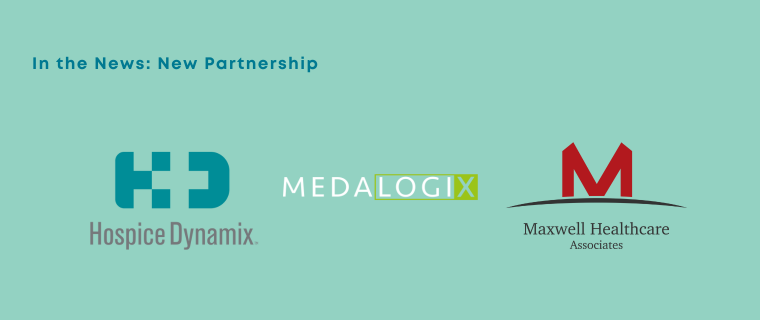Healthcare Informatics: Ensuring The Right Thing For Every Patient, Every Time With Evidenced-Based Care
Healthcare Informatics recently covered the news of our new prescriptive analytics solution, Medalogix Path. Path leverages prescriptive analytics to help clinicians and/or packet reviewers prescribeevidenced-based care plans that help patients achieve optimal outcomes.
Here’s Healthcare Informatics’s interview with Dr. Michael Fleming (Healthcare veteran and former president of the American Academy of Family Physicians) that helps describethe science behind prescriptive analytics and our new solution, Path.
There’s no such thing as a “typical patient,” and for doctors, any tool that helps deliver better insights into a patient’s condition is a welcome one.At the same time, patients rely on doctors to treat them as individuals when seeking medical care. The advent of predictive and now prescriptive analytics elevates evidence-based care, which allows doctors to maximize positive, customized outcomes for their patients while maintaining a high standard of care.
Predicting and Prescribing
Predictive analytics have been helping doctors know which patients might require additional care and when that care might be needed, by analyzing an individual patient’s data against tens of thousands of records. Taking predictive analytics to the next level, prescriptive analytics takes that same data and then incorporates treatment options that recommend the statistical best course of action for the patient. This provides objective data that the doctor can use—in conjunction with the physician’s education, experience and instinct—to create a care plan that is personalized, dynamic and potentially more effective.
No technology will ever take the place of a doctors’ relationship with patients. And no analytics program will ever be in control of a patient’s health or course of treatment. But, in the same way that chest pains and shortness of breath indicate to doctors that a heart attack may be imminent and medical intervention may be required, doctors can use analytics as one of many tools to provide the best care possible.
Evidence-Based vs. Traditional
For doctors, many traditional care plans are determined based solely on a patient’s diagnosis. In some cases, these care plans (many of which were written years ago) are applied by rote, leaving patient populations to be treated based on a “general” prescription, rather than one that’s been individualized to their particular case. But uniformity can be the enemy of a positive health outcome, and using prescriptive analytics will allow caregivers to look beyond diagnoses to develop the most dynamic, personalized and statistically effective care plans possible.
With a deeper well of information to draw from, doctors can not only determine courses of treatment more quickly, but they an also begin difficult conversations sooner (such as whether to prolong care or consider hospice) and recommend individualized courses of care in a way not possible prior to the availability of analytic technology.
Minimizing Overuse and Maximizing Effectiveness
Not only can prescriptive analytics help augment clinical decision making, it can help eliminate unnecessary procedures and save time.
For example, in recent years, it’s come to light that many common treatments such as MRIs and X-rays are overused and overprescribed. In addition, those technologies are expensive and can be prone to giving false positives. With prescriptive analytics, doctors can pinpoint when imaging will benefit the patient and when it’s not necessary, saving the patient time, possible discomfort and expense.
There are countless elements of established healthcare “norms” that can be improved for the benefit of patients, doctors and the overall healthcare system including understanding how many home health visits are effective and when their effectiveness begins to diminish. With prescriptive analytics, we have a more effective way to identify areas wheremorehealthcare is not necessarilybetterhealth care.
Prescriptive technology is poised to become standard practice as doctors seek to find the best course of treatment for a population that is living longer and more apt to require long-term treatment as they age. Furthermore, the need for evidence-based care is likely to continuing to grow in light of the new CMS (Centers for Medicare & Medicaid Services) Home Health Value Based Purchasing Model, which reimburses care providers based on outcomes for patients, rather than the number of procedures performed.
Healthcare is on a course to become increasingly individualized. Prescriptive analytics will be a critical tool for doctors as they navigate treating their patients, while ensuring that they are receiving all of the care they need and none of the care they don’t.
Dr. Michael Flemingis past president of the American Academy of Family Physicians and the Louisiana Academy of Family Physicians, and was founding president of the Louisiana Health Care Quality Forum. He is founding director, chairman and chief medical officer for Antidote Education Company, which provides continuing education for healthcare providers.Dan Hoganis Founder and CEO of Medalogix, a Nashville-based healthcare technology company that provides analytics, workflows and business intelligence solutions to home health providers.
*Originally published inHealthcare Informatics.
Related Blogs

MHA, Hospice Dynamix, and Medalogix Announce Partnership
SHOREVIEW, MN, February 20, 2024 — Maxwell Healthcare Associates (MHA), ...

Announces Release of Pulse Referrals & Admissions Modules Backed by Generative AI
Pulse modernizes admissions workflows with proprietary documentation imp...
Amedisys Finds Answer Key in Medalogix Pulse
Amedisys Expands Home Health Clinical Episode Management Partnership wit...


